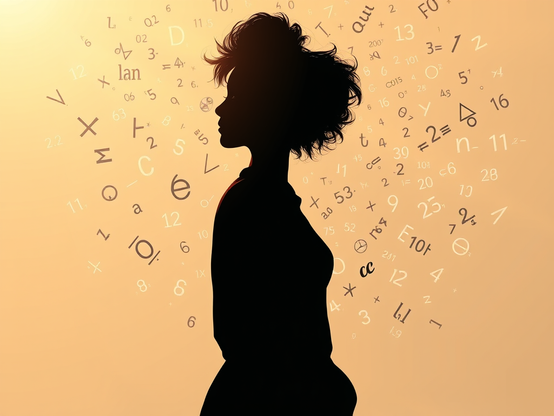ARTnews: Key Video Art Organization’s Future Is Uncertain After Downsizing by School of the Art Institute of Chicago. “The School of the Art Institute of Chicago dismissed more than half of the staff last week at the Video Data Bank, a video art–focused organization whose services are used widely by museums across the globe. Three of the organization’s five staff members saw their […]
#artinstituteofchicago
Art Institute of Chicago - October 2025, Part 2
Opinion | How Math Turned Me From a D.E.I. Skeptic to a Supporter – The New York Times
Opinion, Guest Essay
What I Got Wrong About D.E.I.
Sept. 5, 2025, Listen to this article · 5:32 min
By Eugenia Cheng
Dr. Cheng is the scientist in residence at the School of the Art Institute of Chicago.
As a woman in the male-dominated field of mathematics, I once opposed targeted efforts to help women succeed — what we now call diversity, equity and inclusion initiatives, which are currently facing fierce backlash. I wanted to be judged on the merit of my mathematics alone.
When I was admitted to the University of Cambridge as an undergraduate in math in 1994, I felt that I was a part of a clear minority. I struggled to keep up with some of the men in my class, many of whom had gone to elite boys’ schools where they had intense preparation. Yet I would progress to a Ph.D. and a career as a research mathematician.
As my career has advanced, what I’ve learned is that D.E.I. initiatives helped others see value in my abilities and experience that would have been missed otherwise. And it was through the lens of math that I came to understand this.
Math is not just a way of calculating numerical answers; it is a way of thinking, using clear definitions for concepts and rigorous logic to organize our thoughts and back up our assertions. Numbers can tell us about representation, but they often don’t tell the full story. The percentage of female math graduates in the United States has improved to around 42 percent; however, still less than 18 percent of university professors in mathematics are women. A 50-50 gender split might seem like equality, but not if it was achieved by lowering standards to let more women in. We need to be more careful than that. The nuance found in mathematics can show us a clearer understanding of how to think about equality.
Math is famous for its equations, but equations are more subtle than they first appear. A simple equation like 4 + 1 = 1 + 4 shows not just that two values are equal but also that there are two subtly different ways of adding the same numbers to produce the same result. A similar approach applies to more advanced and complicated forms of math, such as the study of shapes or paths through space. We make choices about how to determine equality.
Continue/Read Original Article Here: Opinion | How Math Turned Me From a D.E.I. Skeptic to a Supporter – The New York Times
#2025 #America #ArtInstituteOfChicago #DEI #DonaldTrump #Education #Health #History #Libraries #Library #LibraryOfCongress #MaleDominatedField #math #Mathematics #Opinion #Politics #Resistance #School #Science #ScientistInResidence #Skeptic #SupportsDEI #TheNewYorkTimes #Trump #TrumpAdministration #UnitedStates
The Red Wings Hockey Team Has a ‘Ferris Bueller’ Moment at the Detroit Institute of Arts https://www.rawchili.com/nhl/138525/ #ArtInstituteOfChicago #ArtnetNews #DarrenMccarty'sDayOff #Detroit #DetroitInstituteOfTheArts #DetroitRedWings #DetroitRedWings #FerrisBuellerArtInstituteOfChicago #FerrisBuellerArtMuseum #FerrisBuellerGordieHowe #FerrisBuellerJersey #GordieHowe #GordieHowePainting #Hockey #Museums #NHL #PopCulture #RedWings #RedWings #TomMosser #TomMosserGordieHowe
Ancient Egyptian Art at the Art Institute of Chicago celebrates more than three thousand years of artistic achievement in the Nile Valley. Expansive in its timeline and its range of media, this richly illustrated digital publication features more than one hundred works from the Art Institute’s collection of ancient Egyptian art.
https://www.artic.edu/digital-publications/42/ancient-egyptian-art-at-the-art-institute-of-chicago
#ArtHistory #EgyptianArt #Museums #Collections #ArtInstituteOfChicago #Catalog #OpenAccess #AncientArt #RomanArt
I drew and cut and glued.
#ArtInstituteofChicago
The Charmy painting I am looking forward to...
#ArtInstituteofChicago
https://www.artic.edu/artworks/9010/l-estaque
Now that I know they have this Joseph Cornell piece, I'm determined to see it today.
#ArtInstituteofChicago
Caillebotte show this summer 👀
#ArtInstituteofChicago
https://www.artic.edu/exhibitions/10068/gustave-caillebotte-painting-his-world
Sorry, MFAH, Chicago food wins! Can't type, must swoon. #ArtInstituteofChicago
Cindy Sherman! And so much more! #ArtInstituteofChicago
Brick with ogre mask, Tang dynasty, Henan province
ProPublica: The Art Institute of Chicago Returned a Sculpture to Nepal But Obscured Its Connection to a Wealthy Donor. “The Art Institute of Chicago announced recently that it had returned to Nepal a sculpture that had been in its collection for at least a quarter century. Conspicuously left out of the press release: that the sculpture had been a gift from a wealthy Chicago donor.”
By this point, I’d been walking for two hours and explored 20+ galleries. I thought I had seen everything on the second floor... until I turned a corner and realized I was only halfway through. 😳
Rodin’s "Portrait of Balzac" (1893, cast 1926–33) is described as 'deliberately ungainly,' which feels like an understatement. This was one of many studies Rodin created before settling on the final, robed version... which, fun fact, was the one that got rejected.
Upstairs, I ventured into the maze of the Arts of Europe.
The Peninsula Chicago: High End for the Win
Fancy some art in Chicago? Stay at the Peninsula in high luxury while you're there! Our visit to the city was excellent in most of the ways. Of course our room was not ready when we arrived before noon on Sunday, and then the powers that be switched our assigned room out from under us while we visited the MCA. The switch was very much likely for the better as we moved from an executive suite on 12 to a grand deluxe suite on 9. The room was, in fact, amazing. Comfortable, well-designed, […]https://noplasticshowers.com/2024/11/30/the-peninsula-chicago-high-end-for-the-win/
44th annual exhibition by artists of Chicago and vicinity--The Art Institute of Chicago
http://www.loc.gov/item/98509666/
#screenprints #color #illinois #artexhibitions #artinstituteofchicago #chicago #exhibitionposters #exhibitionsdisplays
49th annual exhibition of American paintings sculpture
http://www.loc.gov/item/98513519/
#screenprints #color #illinois #artexhibitions #artinstituteofchicago #chicago #exhibitionposters #exhibitionsdisplays
49th annual exhibition of American paintings sculpture Ride the North Shore Line /
http://www.loc.gov/item/98513526/
#exhibitionposters #artexhibitions #artinstituteofchicago #exhibitionsdisplays #illinois #color #screenprints #chicago




